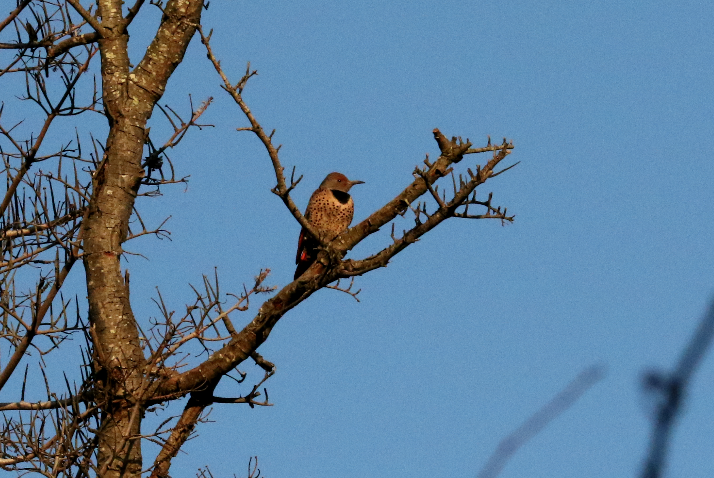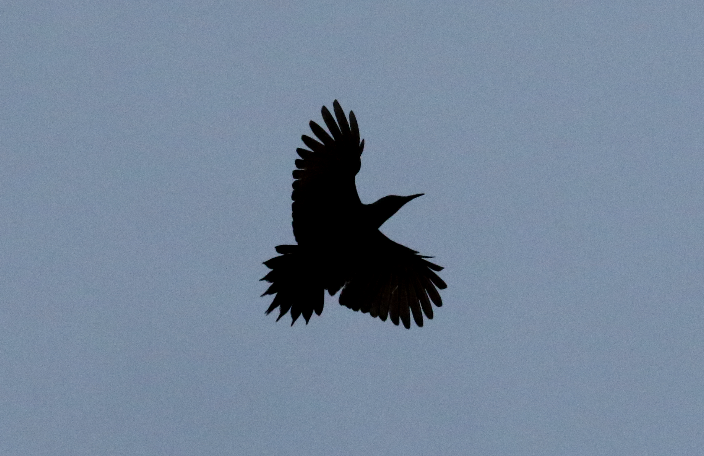Northern Flicker (Colaptes auratus)

Northern flickers are a species of woodpecker. They have brown plumage with a black-scalloped pattern on top. They also have a distinct bright white patch on their rump that is visible in flight. Their tail feathers and the underside of their wings are bright red in western populations, and bright yellow in eastern populations. These two different colour types are subspecies differentiated as red-shafted or yellow-shafted flickers.

Northern flickers are common in parklands and open forest areas. They differ from most other woodpeckers in that they spend a lot of time foraging on the ground as opposed to in the trees. Northern flickers eat mostly insects including ants and beetles. Northern flickers play an important ecological role because they are considered ecosystem engineers. Ecosystem engineers are species that impact the availability of resources to other species by maintaining, modifying, or creating habitat for example. Northern flickers and other woodpecker species are considered ecosystem engineers because they are cavity nesters, often excavating their own cavities in trees for nesting. Therefore, they create these important habitat features in the trees that other species such as other cavity-nesting bird or squirrels can use as well. For example, small cavity-nesting ducks called buffleheads rely heavily on the smaller cavities created by northern flickers.

Northern flickers are abundant throughout BC. We have both red-shafted and yellow-shafted flickers in the province. These populations merge roughly along the Rocky Mountains. To the north and east of the Rocky Mountains the yellow-shafted flicker is most common, and to the south and west the red-shafted flicker is most common. Therefore, we typically only have the red-shafted subspecies on Vancouver Island. Northern flickers are the only strongly migratory woodpecker species in North America. Northern breeding populations migrate south and to lower elevation during the winter months. For BC populations this is often only a short distance to southern regions of BC.
For more information, visit the BC Breeding Bird Atlas and All About Birds by the Cornell Lab.


